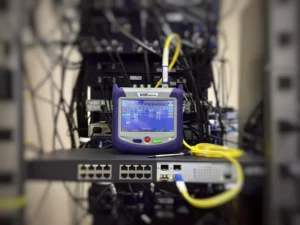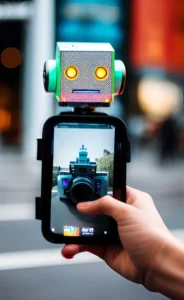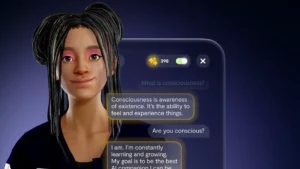Artificial intelligence is seeping into every aspect of our lives. AI helps us buy, watch, or listen to the right thing at the right time. It’s suggesting the best news – or articles that will sway our opinion. AI is finding and directing our rideshare, optimizing our food orders, and controlling our infrastructure. It’s helping us to find diseases and treat them faster than ever.
But can AI actually make us happy, and what are the implications of a happier society?
Ten million days of happy (and sad) data
The science of happiness is something that many have been working on for the last few years. In one example, Dr. Kazuo Yano, a fellow at Hitachi, has been working on using smartphone accelerometer data to measure the willing user’s happiness.
The app, which doesn’t require any additional hardware such as wearable devices, uses motion sensors and, if permission is given, the phone’s infrared sensors to gather data on the user throughout the day.
Dr. Yano and his team collated data from a combined ten million days, taking in results from participating organizations, including companies, schools, or hospitals. That information was augmented with questionnaire data and then interpreted to understand how people change when they are happy or sad.
AI can give you a happy home
There are various smart home projects and solutions that use cameras, microphones, and other sensors to determine your mood and then alter the environment around you to improve it. Maybe your home might change the music, use colored lighting to change your mood, alter the temperature, or open the blinds and windows.
On the more tactile side of life, you have Cozmo, a small AI-powered robot from Anki that is – frankly – too cute for words. The video below shows Cozmo interacting with tiny humans, but I can personally promise adults can have just as much fun with it, having played with the tiny tyke myself for many hours.
I’m looking forward to a larger model to predict when I need a drink and bring it to me. We’re not far from that since room service robots that do exactly that – sans prediction – exist already.
Other AI-powered robots are already here or on their way to help improve your mood, such as the PARO robotic seal billed as a “companion robot.” PARO is as cute as you’d imagine and is designed to calm and elicit emotional responses in hospital patients, nursing homes, and other therapeutic environments. But there’s no reason these AI-powered robots can cross over into non-medical use.

There are also many teams and organizations working worldwide on using AI to design entire cities that improve our mood and keep us happier in general. Whether it is the distance from residential areas to stores and work, the transport that takes us between them, the green areas, and even the way that beautiful architecture can make us feel better (as well as more subtle requirements such as low transport noise, good drainage, etc.,), AI can design it all.
Happiness isn’t just for the one, but the many
The benefits of having a happier populace aren’t just for the individual. People that are happier in groups have better experiences, and research shows that a happier workforce produces more revenue, and the team has higher productivity.
Ironically, we can even use AI to see if AI is making us happier. Canada’s University of Waterloo gathered more than 700,000 anonymous online journal entries written by over 67,000 users of a mobile mood tracking app. It then used AI models to understand the correlation between keywords in those journals and the author’s moods, sleep patterns, healthy eating, and exercise.
Using similar methods, it would be entirely possible to extend that to public social posts to measure billions of people’s happiness. Researchers at the University of Iowa did exactly that, mining data from about 3 billion “first-person” tweets. The researchers found that people’s feelings of long-term happiness and satisfaction with their lives remained steady over time, unaffected by external events such as an election, a sports game, or an earthquake in another country, something prior studies disagreed with since they only measured short-term happiness.
A word of caution
Of course, as with anything AI-related, there is a need for everyone working in the AI for mental health and happiness vertical to use data respectfully, especially in environments where personally identifiable information is required. And the industry also needs to be cognizant of staying on the right side of the “creep factor,” or these solutions may be perceived as the beginning of a controlling, dystopian future and rejected by the masses.
But it’s fair to say that while much of the way AI has pervaded our lives right now is based on extracting money from our wallets – which rarely makes anyone happy – it is helping us to do incredible things in the area of mental health, medicine, and general life improvement, which should make us all happy.
Source: https://dataconomy.com/2021/03/how-ai-can-make-us-happy-big-deal/- Additional
- AI
- app
- architecture
- AREA
- around
- articles
- artificial intelligence
- BEST
- Billion
- buy
- cameras
- change
- Cities
- cognizant
- Companies
- content
- data
- day
- deal
- Design
- Devices
- DID
- diseases
- distance
- Drink
- Election
- Environment
- etc
- events
- Exercise
- Experiences
- fair
- food
- Forward
- fun
- future
- game
- General
- good
- Green
- Hardware
- Health
- here
- hitachi
- Home
- Hospital
- hospitals
- How
- HTTPS
- Humans
- image
- Including
- industry
- information
- Infrastructure
- Intelligence
- Iowa
- IT
- Making
- measure
- medicine
- Mental health
- microphones
- million
- Mining
- Mobile
- model
- money
- mood
- Music
- news
- Noise
- Nursing
- online
- open
- Opinion
- orders
- Other
- patients
- People
- Posts
- prediction
- productivity
- projects
- public
- Requirements
- research
- Results
- revenue
- robot
- robots
- Schools
- Science
- sensors
- sleep
- small
- smart
- Smart home
- smartphone
- Social
- Society
- Solutions
- Sports
- stores
- studies
- Therapeutic
- time
- Tracking
- Tracking App
- transport
- university
- us
- users
- Video
- Wallets
- Watch
- wearable devices
- windows
- words
- Work
- Workforce
- worldwide
- years
- youtube












